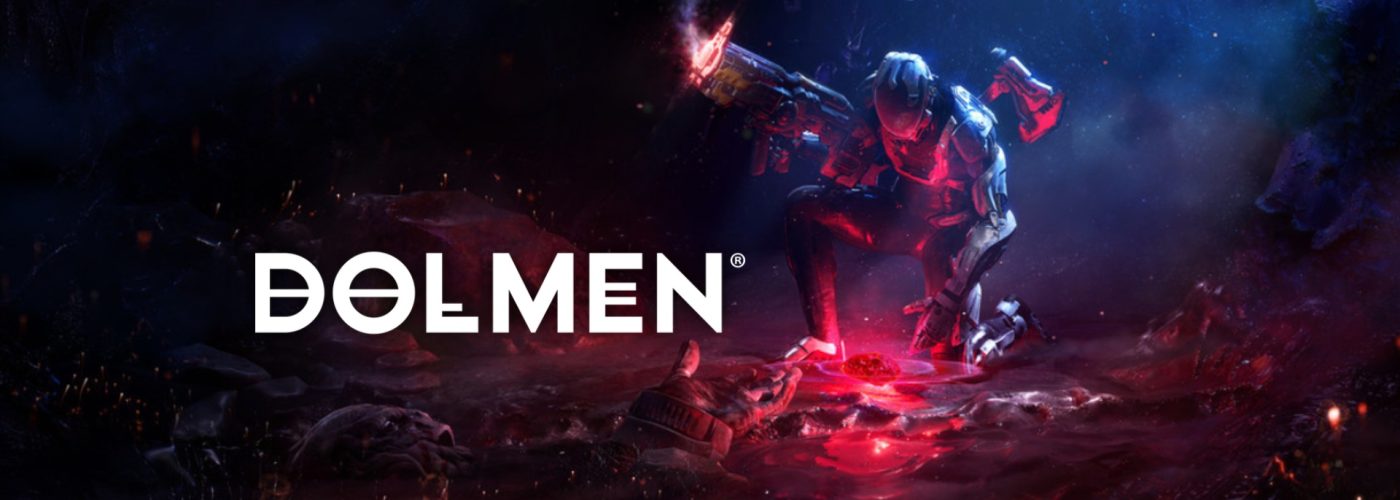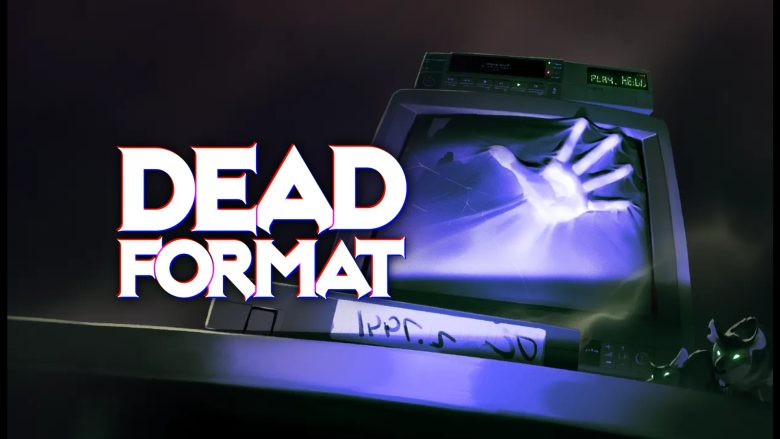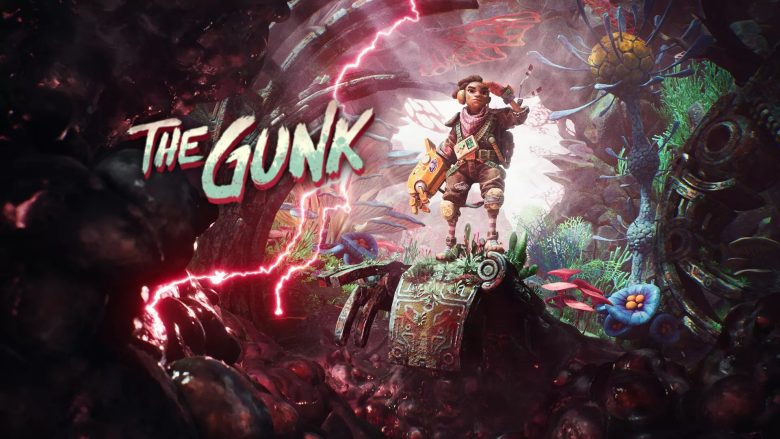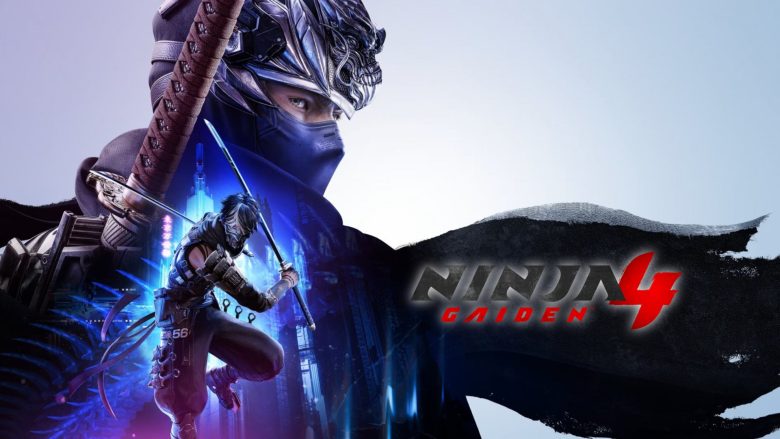A Brazilian-made soulslike, bringing fresh energy to a classic formula.
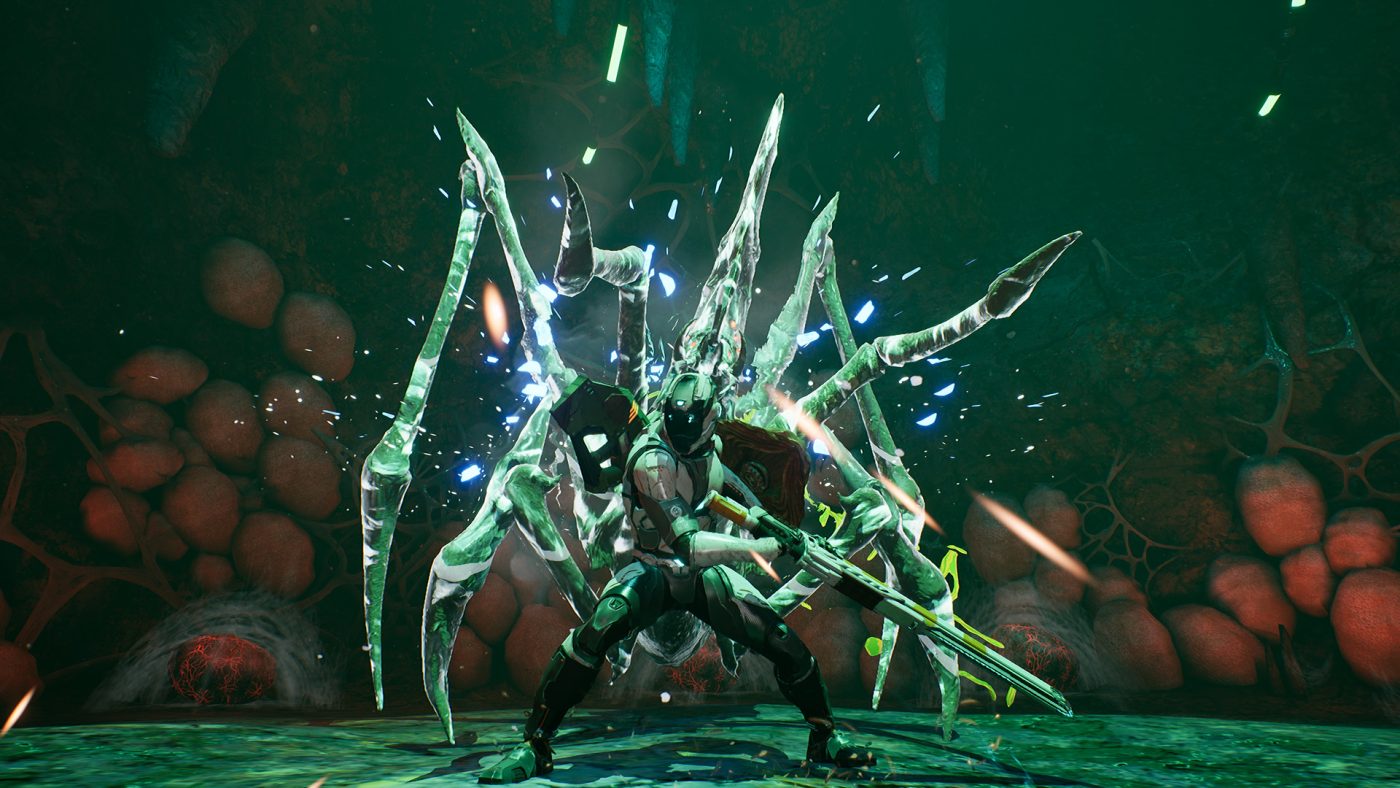
Dolmen is an action-RPG with strong “soulslike” influences, set in a dark, alien sci-fi universe steeped in cosmic horror. The game throws players into an alien world where danger lurks around every corner, offering punishing, rhythm-based combat that rewards careful observation, precise timing, and smart equipment choices. Instead of swords and dragons, players wield high-tech weaponry, energy-based abilities, and face off against Lovecraftian horrors, creating a fresh and challenging take on the genre.
Narratively, the premise is simple yet compelling: the player lands on the hostile planet Revion Prime to recover the “Dolmen” crystals, mysterious resources capable of bending reality. As you explore abandoned outposts, alien tunnels, and contaminated wastelands, what initially seems like a routine scientific mission quickly unravels into something far more sinister – forces that defy human understanding, entities that corrupt matter, interdimensional monsters, and eerie hints of a presence that borders on the metaphysical.
Gameplay revolves around mastering death and resurrection, carefully crafting builds through equipment and abilities, and striking the right balance between aggressive offense and tactical defense. Your choices of weapons and skills shape different approaches to combat, increasing replayability and offering room for experimentation. Every encounter demands strategy, patience, and adaptability, making Dolmen a rewarding challenge for players who enjoy deep, methodical gameplay.
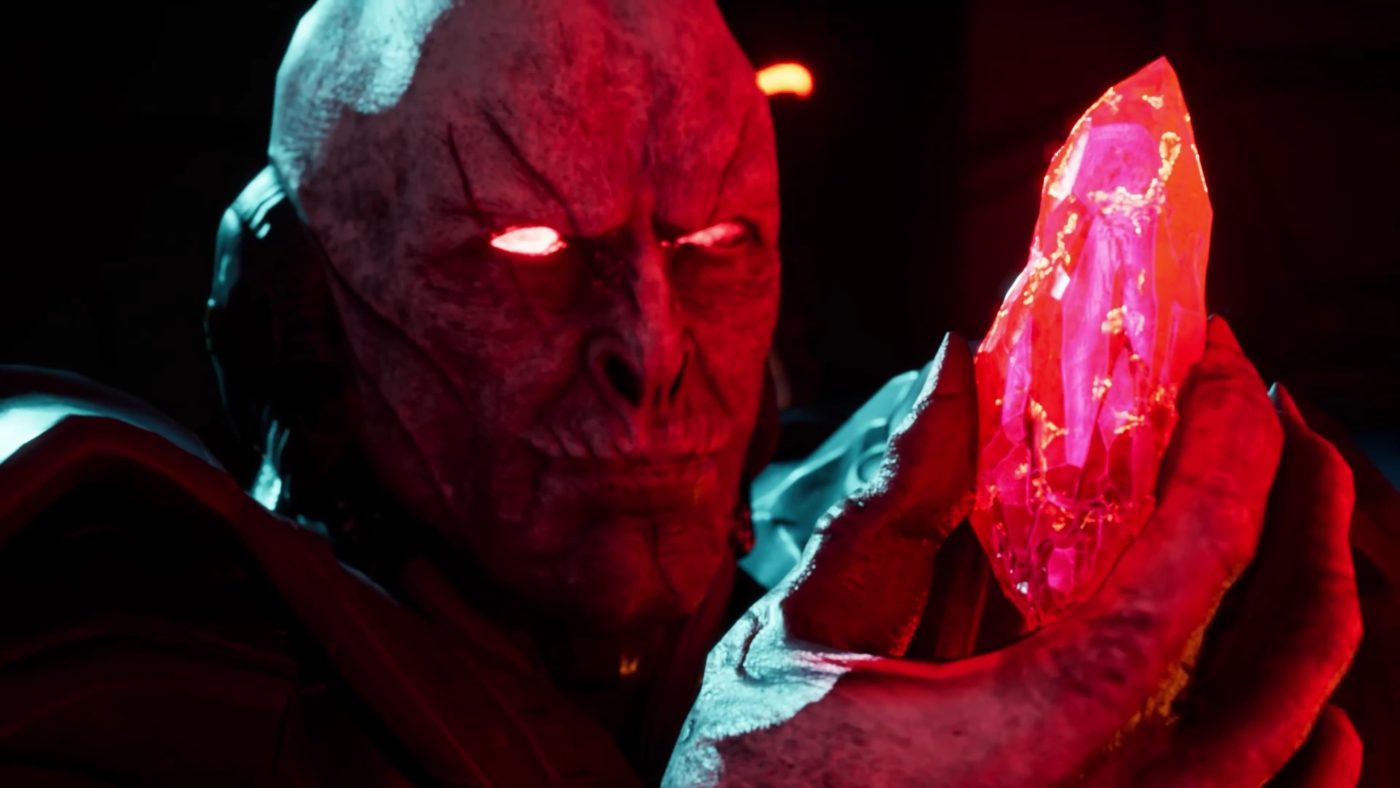
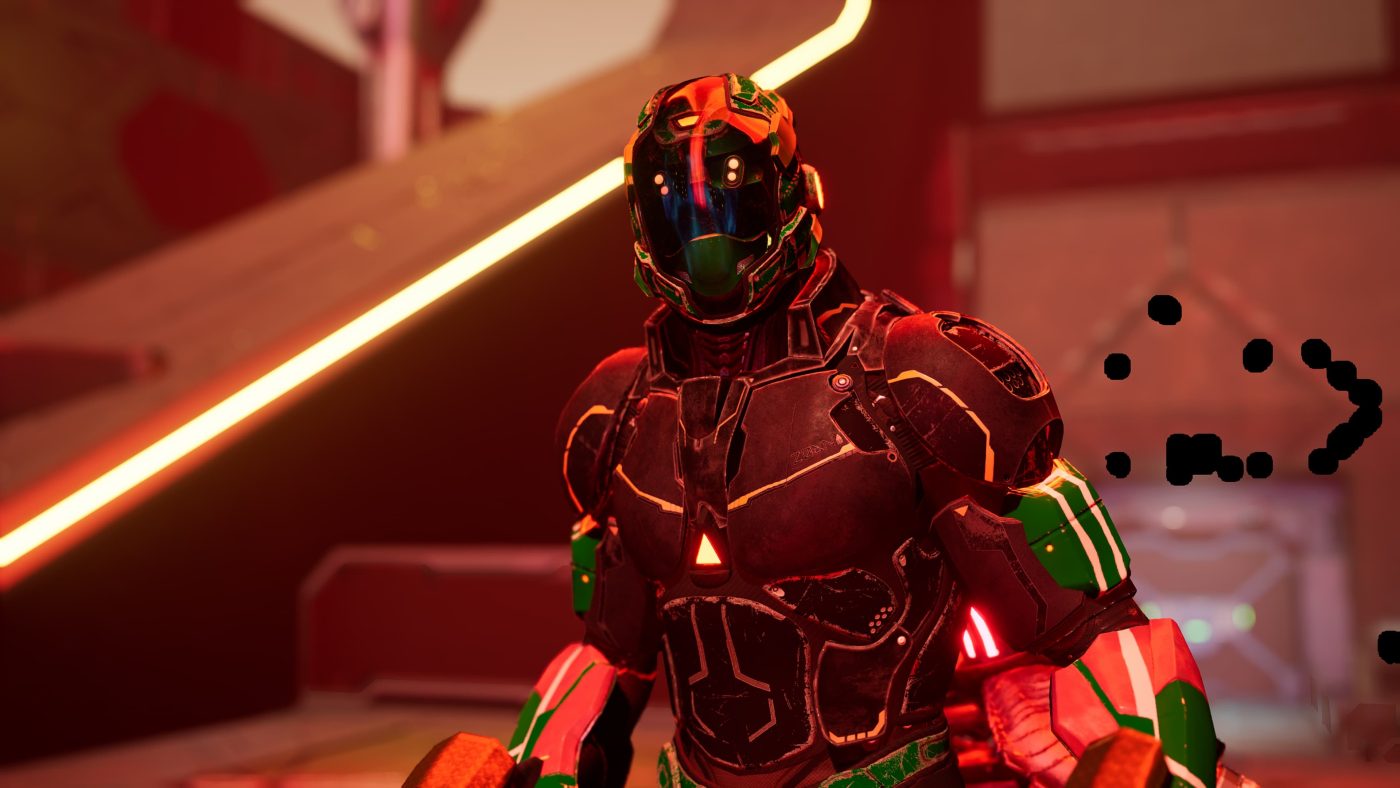
Massive and Prime
To truly grasp what Dolmen represents, it is essential to look at the development journey of its studio and the pivotal role of its publisher in bringing the project to a global audience. A video game is rarely just the product of creative ideas – it is also shaped by production conditions, financial resources, and strategic publishing decisions.
Dolmen was developed by Massive Work Studio, a Brazilian studio based in Natal, founded in 2016 by a team of industry veterans with experience on AAA titles such as Injustice 2, Gears of War, and Diablo. This blend of experience immediately defined the studio’s identity: combining the technical precision and international ambition typical of high-end productions with the passion, flexibility, and ingenuity characteristic of independent teams. As the studio’s first major original project, Dolmen represented a significant challenge in terms of scope, ambition, and visibility.
The team’s achievements are particularly notable given the studio’s geographical and cultural context. Brazil is not traditionally regarded as a global hub for game development, yet studios like Massive Work are increasingly putting the country on the international gaming map. Taking on a project like Dolmen – designed for multiple platforms and positioned competitively within the soulslike genre – required the studio to step out of a local market and address a global audience. This adds a symbolic dimension: Dolmen is not merely a game, but a showcase of the potential for emerging studios from less conventional markets to gain recognition on the world stage.
On the publishing side, the project was supported and released by Prime Matter, a relatively new label under Koch Media that focuses on mid-tier productions with original ideas, moderate budgets, and global reach. Prime Matter’s involvement was critical not only for international distribution but also for supporting the final stages of development, marketing, and the simultaneous launch across multiple platforms, including PC, PlayStation 4, PlayStation 5, Xbox One, and Xbox Series X|S.
This collaboration highlights how the modern gaming ecosystem allows independent studios to realize ambitious projects with the backing of publishers willing to invest in innovative concepts. Prime Matter positioned Dolmen as a sci-fi soulslike that stands out for its fusion of cosmic horror with classic genre mechanics, framing a marketing campaign centered on the title’s distinct identity: a dark, alien world that blends Lovecraftian motifs with technological and futuristic environments.
The partnership between Massive Work Studio and Prime Matter clearly defines the essence of Dolmen: a project born from the passion and ambition of a young, creative team, enabled in scope and distribution by a publisher dedicated to supporting alternative, original productions. This context explains both the game’s strengths – its artistic originality, strong identity, and deliberate niche positioning – and some of its limitations, particularly in technical polish and refinement when compared to high-budget AAA titles.
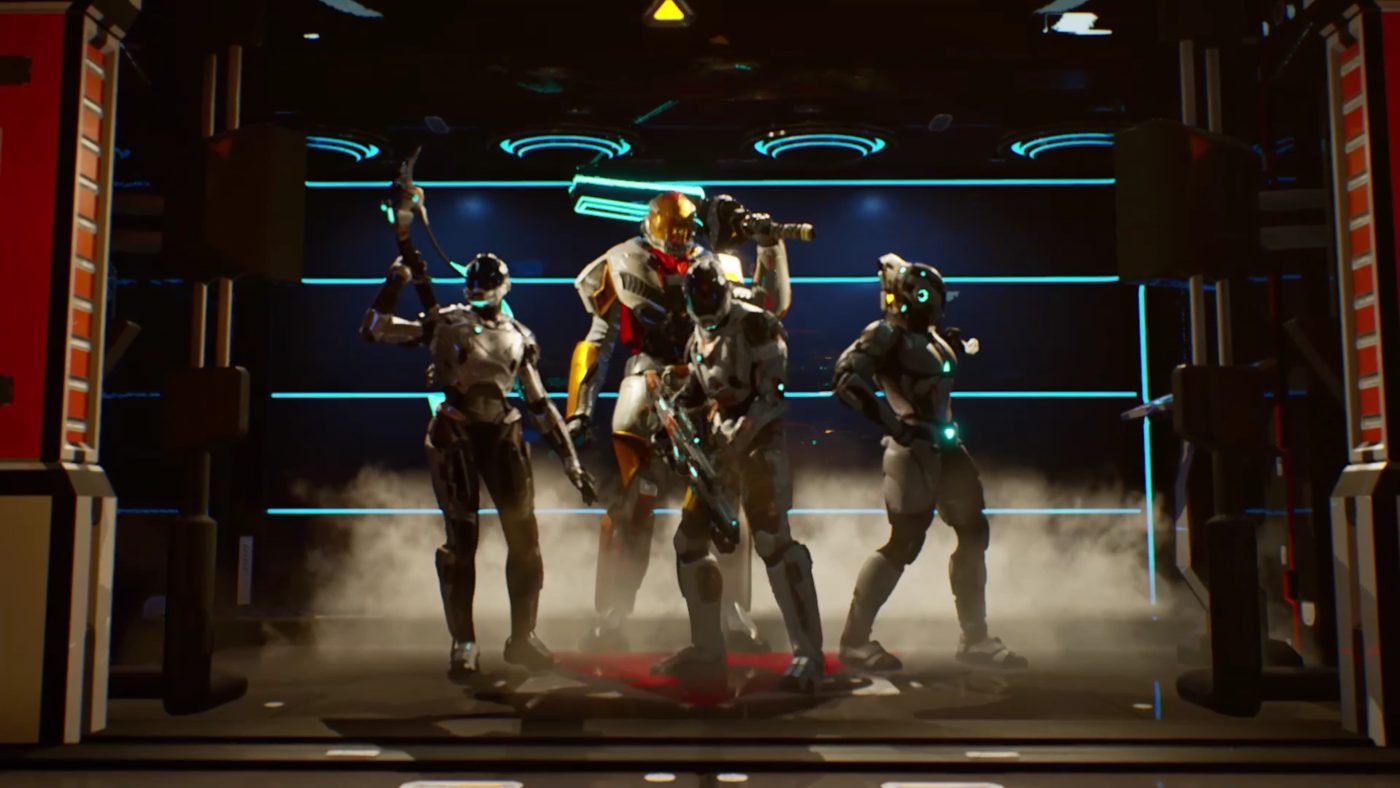
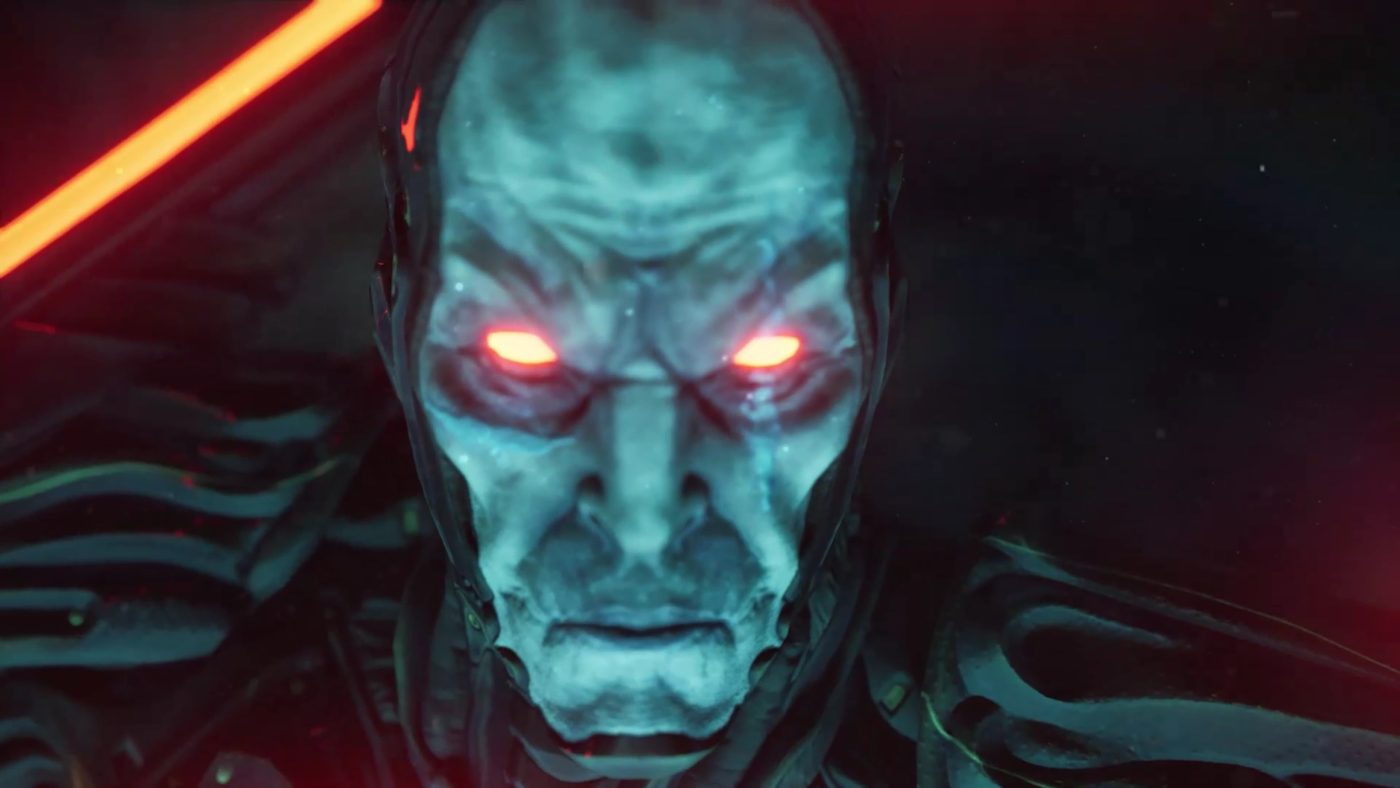
Into the Alien Abyss
The story of Dolmen unfolds in a setting that masterfully blends spacefaring science fiction with cosmic horror, creating a tense atmosphere caught between technological rationality and the utterly unknown. Players step into the role of an explorer, acting as an avatar for themselves, sent to Revion Prime, a hostile and distant planet, to investigate and recover the mysterious crystals known as Dolmen. These crystals are far from ordinary – they can interact with alternate realities, manipulate parallel dimensions, and potentially rewrite the fundamental laws of the universe.
What starts as a seemingly routine scientific and retrieval mission quickly escalates into something far more dangerous. Revion Prime is no empty wasteland; it teems with mutated creatures, alien predators, and Lovecraftian horrors: unnatural, tentacled beings that defy the laws of biology and radiate interdimensional corruption. As players venture deeper, it becomes clear that the Dolmen crystals are not mere scientific curiosities – they are powerful catalysts that attract cosmic forces, entities that invade the planet’s reality and distort it in nightmarish ways.
Narrative progression in Dolmen is primarily environmental and combat-driven. Unlike traditional story-heavy games, there are few long cutscenes or detailed dialogues. Instead, the tale emerges through scattered clues: audio logs, terminals, visual storytelling, and subtle environmental hints. Players piece together the story themselves, a signature feature of the soulslike genre. This fragmented approach amplifies the sense of mystery and disorientation: as the protagonist, you are never fully certain of what you’re confronting, and the ultimate truth remains tantalizingly out of reach. A central element of the narrative is the link between the protagonist and the alternate dimensions the Dolmen crystals can open. Enemies frequently appear to come from other realities, crossing over to Revion Prime through dimensional rifts. This framework not only explains the disturbing variety of adversaries but also invites reflection on science, knowledge, and the limits of human understanding.
The corporate entity that sent the protagonist adds another layer to the story. While details are scarce, it’s evident that the mission is driven not only by scientific curiosity but also by military and industrial ambitions. The Dolmen crystals represent a virtually limitless source of power, and controlling them could mean domination over entire civilizations. This introduces an ethical dimension: survival for the protagonist contrasts sharply with exploitation and control for those orchestrating the expedition.
The pacing of the story is closely tied to gameplay milestones: boss encounters act as both narrative peaks and gameplay challenges, embodying the planet’s most corrupted and potent forces. Defeating each boss unlocks new areas while revealing additional fragments of the story. Progress unfolds through a gradual revelation of horror, building a sense of immersion in a saga far larger and more menacing than initially apparent.
Ultimately, Dolmen eschews a linear, cinematic narrative in favor of building a mythology of terror and mystery within a sci-fi context. The focus is on atmosphere, alienation, and player interpretation, rather than character arcs or interpersonal drama. Its strength lies in its fragmented storytelling and the player’s active role in connecting the dots, creating an unsettling, immersive experience that lingers long after the game is turned off.
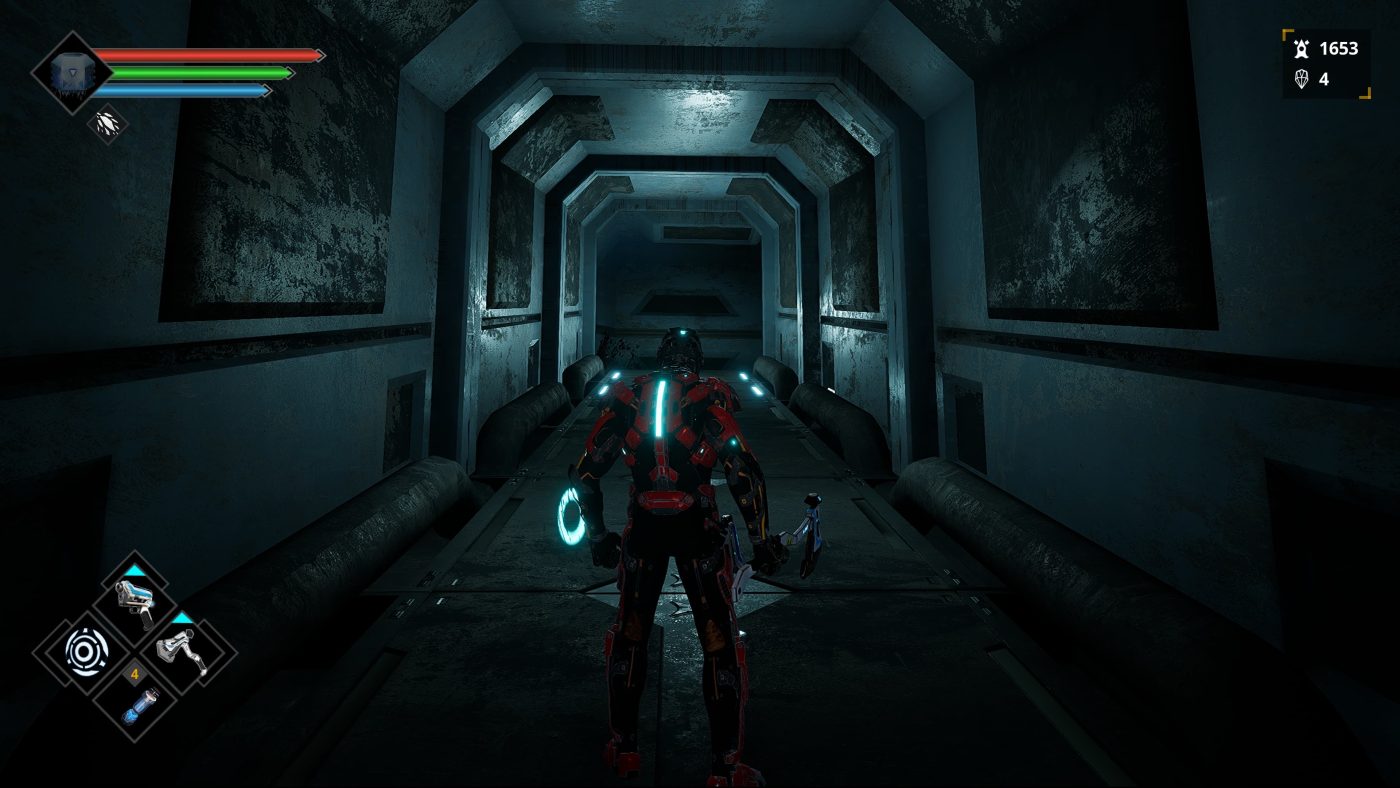
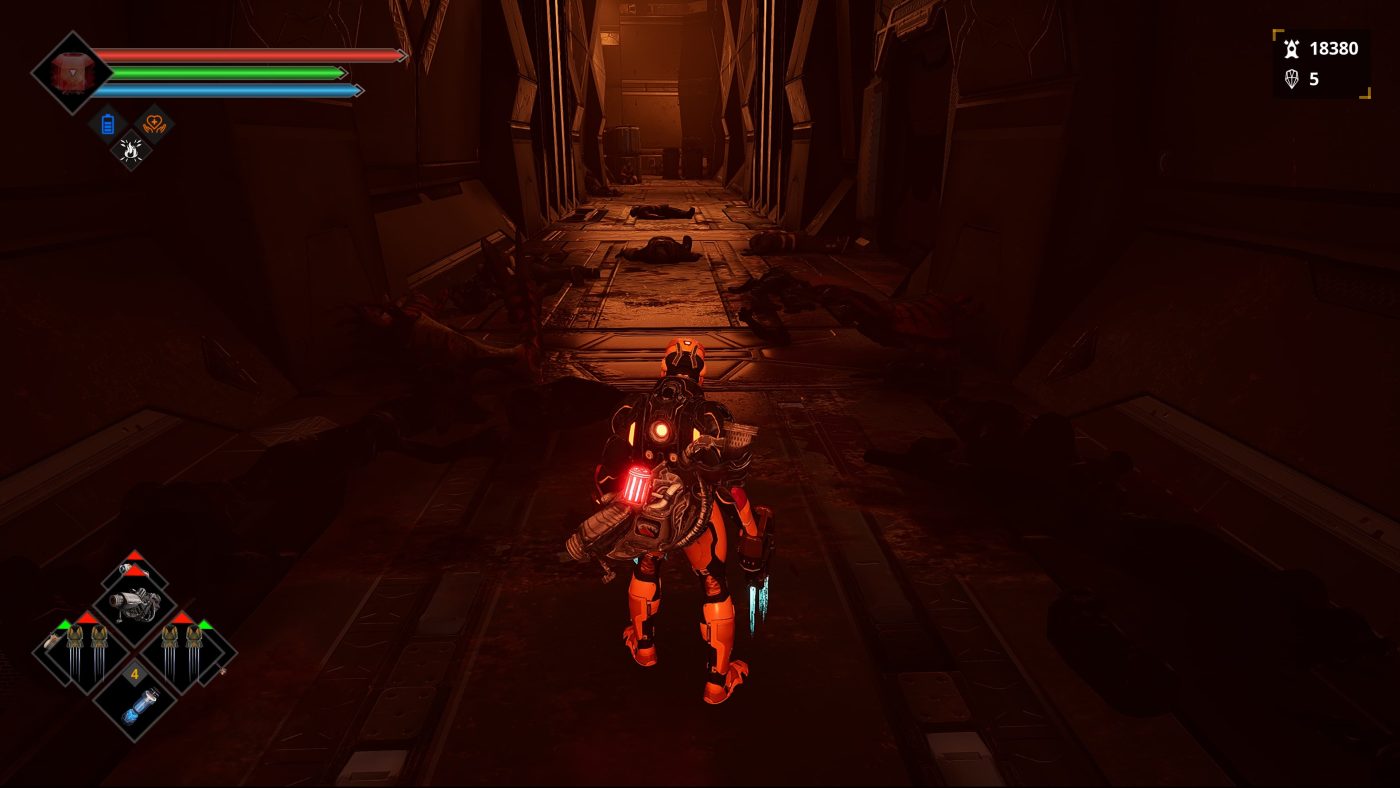
The Fragile Balance of Life on Revion Prime
One of Dolmen’s most remarkable qualities is its ability to fuse the precise, often rigid logic of technological science fiction with the unsettling, irrational essence of cosmic horror. The narrative unfolds as a tapestry of fragmented clues, atmospheric details, and subtle hints, inviting the player to actively interpret and piece together the story.
This intentionally minimalistic and cryptic approach is characteristic of soulslike games, yet Dolmen adds a distinctive layer: the sense of alienation arises not only from the challenging gameplay, but from confronting a cosmos that refuses explanation and resists human comprehension.
At the center of the story are the Dolmen crystals – interdimensional keys and symbols of the complex interplay between science and power. On one hand, they embody humanity’s desire to push beyond the known; on the other, they warn that every step into the unknown can trigger unforeseen and uncontrollable consequences. In this way, the game raises a thought-provoking question: how far can humanity manipulate forces it barely understands without succumbing to them?
Corruption and mutation form another core theme. Revion Prime is far from a static world; it is alive with entities from other dimensions. Its inhabitants are hybrid, monstrous creatures whose very existence defies biological laws. Through these abominations, the game conveys that the boundary between the natural and unnatural has vanished. This recurring motif of mutation acts as a metaphor for ontological instability: nothing is truly as it seems, and every form of life risks being reshaped by the corrupting influence of the Dolmen crystals.
Corporate greed and resource exploitation further intensify the narrative. The protagonist’s mission is not guided purely by scientific curiosity, but by economic and military agendas. The corporations sending explorers to Revion Prime are not merely uncovering its secrets – they aim to seize the extraordinary power contained in the crystals. Dolmen aligns with a broader narrative tradition exploring how profit-driven logic can push humanity to dominate, exploit, and corrupt forces it does not fully comprehend. This theme resonates strongly with contemporary concerns: the danger that science, subordinated to financial interests, may become a tool of self-destruction.
The game also engages with the theme of cosmic insignificance, a hallmark of Lovecraftian horror. Boss encounters and the incomprehensible nature of alien creatures reinforce the idea that humans, no matter how well-armed or technologically advanced, are fragile players in an indifferent and hostile universe. Heroism is measured not in glory, but in mere survival against overwhelming odds.
A subtler but equally pervasive theme is solitude. The absence of genuine companions, the scarcity of human interaction, and the omnipresence of hostile landscapes create an intimate, often isolating narrative experience. Players are forced to confront their own limitations without safety nets. This pervasive solitude, more than immediate threats, shapes the emotional core of the game, amplifying the sense of alienation, unease, and despair that permeates the world of Dolmen.
Ultimately, Dolmen tackles themes of striking relevance: the fragility of humanity in the vastness of the cosmos, the dangers of unchecked technological ambition, corruption as an unstoppable force, and the cold indifference of a universe that defies understanding. The narrative is as intellectually compelling as it is atmospherically immersive, establishing the game as a distinctive and memorable entry in the sci-fi soulslike genre.
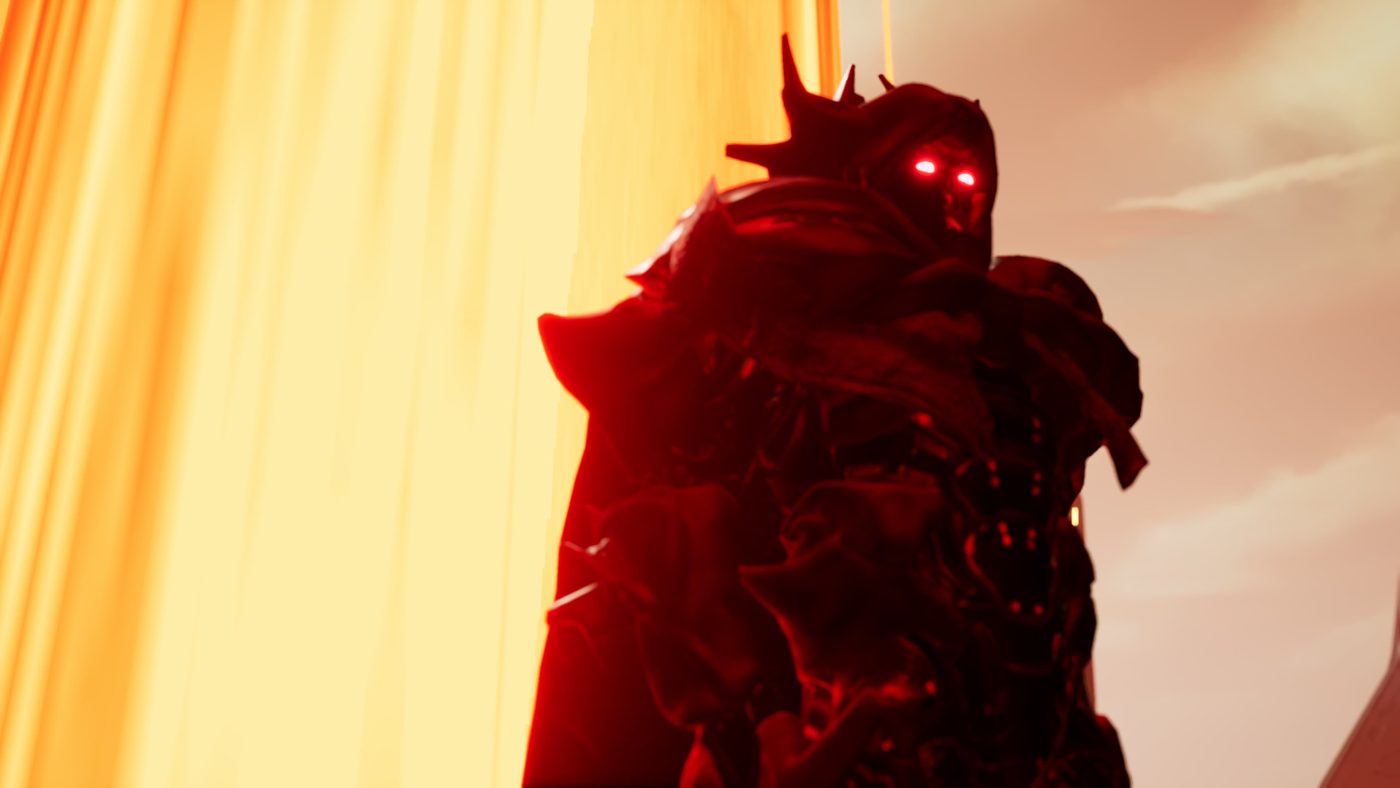
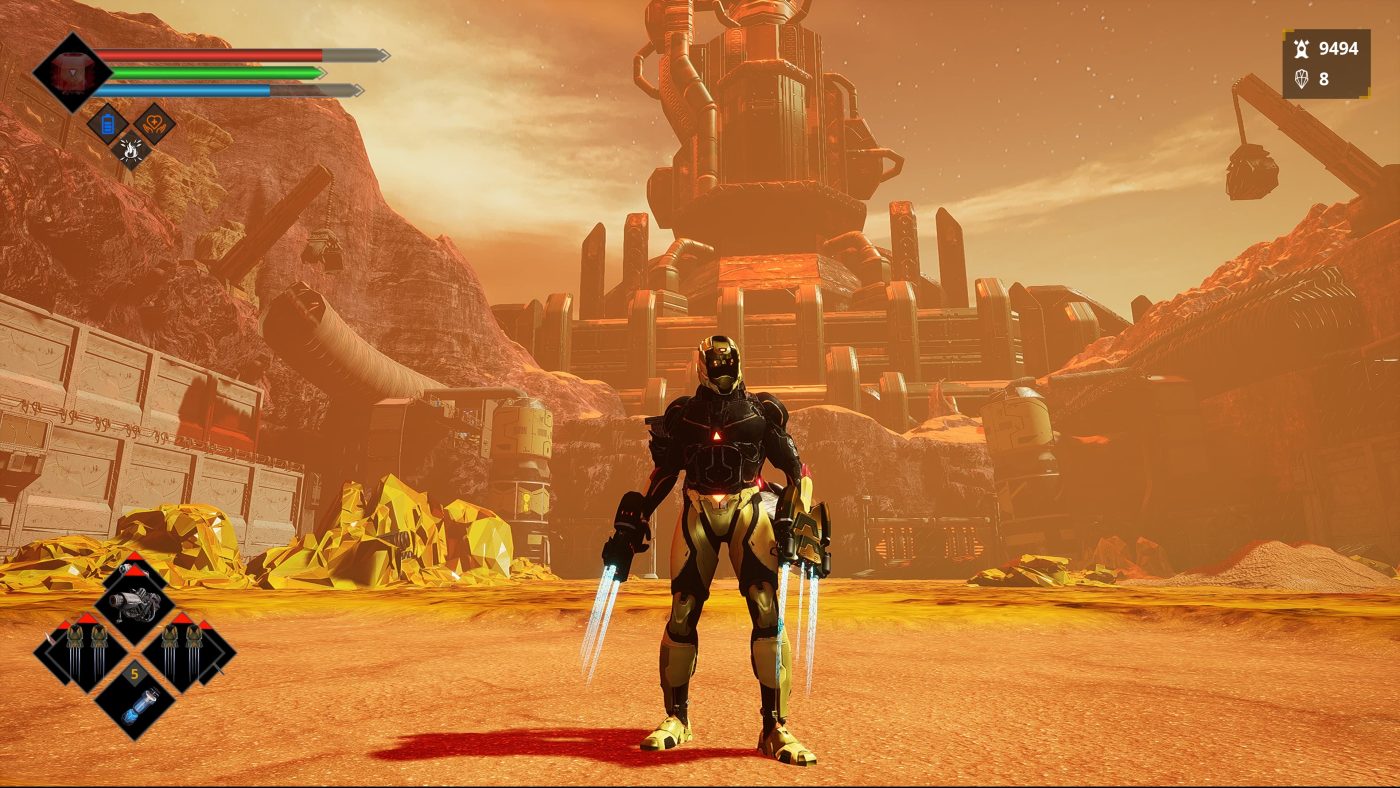
A Distinctive and Thoughtful Artistic Vision
The technical framework and art direction of Dolmen deserve close attention, as they form the foundation of the game’s overall experience. Developed using Unreal Engine – a popular choice among mid-sized and independent studios – the title benefits from a robust platform for managing lighting, particle effects, and surface textures. These technical elements are crucial in shaping the game’s aesthetic: stark lighting contrasts, volumetric fog, and eerie alien glows define much of Revion Prime’s atmospheric identity. Despite budgetary limitations, the team leveraged the engine’s capabilities to the fullest, using precise artistic direction to mask certain technical constraints.
Art direction is arguably one of Dolmen’s most defining strengths. Every environment is crafted to evoke constant tension and unease: narrow corridors, jagged caverns, decaying industrial complexes, and contaminated open expanses alternate to maintain visual variety, even when certain assets are reused. Color design plays a pivotal role – cold hues, acid greens, and unnatural reds combine to create an alien, toxic world far removed from any terrestrial familiarity. These chromatic choices reinforce the sense of a planet twisted and corrupted by interdimensional forces.
Enemy design stands out as particularly striking. The creatures are intentionally grotesque: tentacular forms, biological distortions, and hybrid features blending organic and technological elements. Each monster feels like a manifestation of cosmic horror. While the variety is not extensive, it is sufficient to sustain tension throughout the game. Boss encounters are especially memorable, functioning as dramatic visual set pieces: colossal figures dominate the scene with unsettling shapes and menacing animations. Here, stylistic ingenuity compensates for technical limitations, making key battles truly impactful.
The protagonist and equipment design are equally notable. Armor and weapons evoke futuristic engineering while incorporating alien motifs that harmonize with the setting. The ability to craft and upgrade gear adds visual diversity, allowing players to customize their avatar in ways that reflect their strategic choices and gameplay style.
On the technical side, some limitations are evident. Textures are occasionally less sharp than ideal, animations can appear stiff, and certain areas feel repetitive. Level design sometimes leans toward linearity, which aids navigation but diminishes the sense of exploration and the impression of a vast, interconnected world. Minor frame rate drops and occasional bugs, while not game-breaking, serve as reminders of the project’s independent production context.
Despite these shortcomings, Dolmen’s visual identity remains strong and evocative. Cohesive aesthetics, thoughtful use of lighting and color, and the unsettling creature design combine to create a world that leaves a lasting impression. The goal is not photorealism, but evocative immersion: the game prioritizes an atmosphere of alienation, hostility, and cosmic corruption over scientific accuracy. From this perspective, the art direction succeeds brilliantly.
In conclusion, Dolmen’s technical and artistic framework strikes a careful balance between structural constraints and creative ambition. While it may not rival the spectacle of high-budget AAA titles, its bold stylistic choices make Revion Prime a memorable, alien, and unsettling world, perfectly aligned with the game’s narrative and thematic vision.
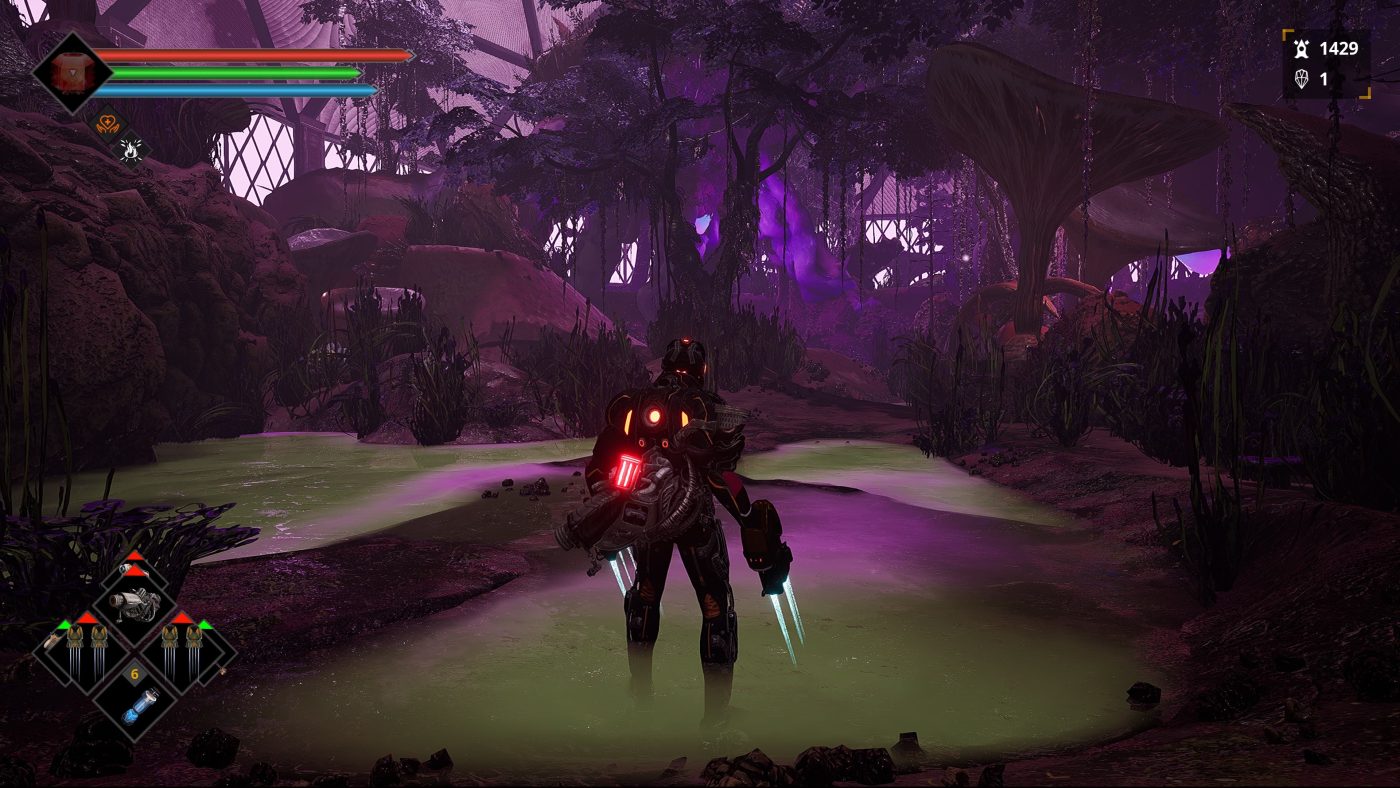
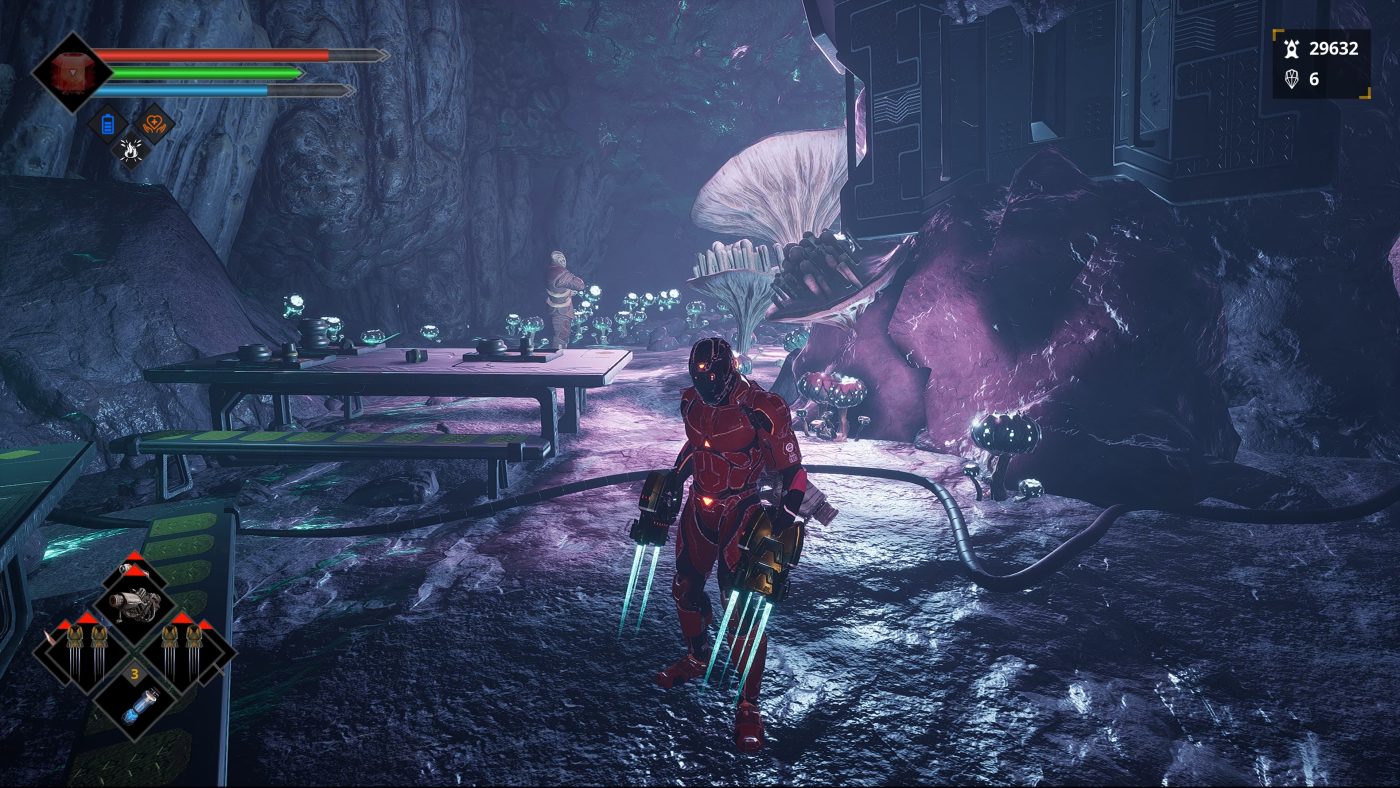
Top-Tier Audio Design
While Dolmen stands out visually thanks to its art direction, the game’s sound design proves equally essential in crafting the pervasive sense of unease and tension that defines the experience. Audio is not merely a backdrop; it is integral to world-building, shaping the player’s perception of Revion Prime and reinforcing its alien, hostile atmosphere.
The soundtrack adopts a subtle, restrained approach, avoiding overtly melodic or intrusive themes. Instead of memorable motifs, it operates as layered ambience, blending electronic textures, ominous percussion, and low-frequency drones that make the environment feel alive. This design sustains a constant undercurrent of tension, hinting at danger even in moments of apparent calm. Musical peaks often coincide with boss encounters or particularly demanding sections, heightening the sense of pressure and turning each confrontation into a dramatic, immersive event.
The true strength, however, lies in the environmental soundscape, which brings Revion Prime to life. Players experience the world through carefully crafted audio cues: the crunch of shifting rocks, hissing echoes from deep fissures, and the unsettling rustle of unseen presences. Every step, metallic clang, and distant creature cry reinforces the impression of a planet brimming with hostile forces. These subtle details encourage cautious exploration, as sound becomes a key tool for anticipating threats.
Enemy audio design is equally remarkable. Each creature has a distinctive sonic signature – guttural growls, high-pitched hisses, and otherworldly cries – that heightens the horror and provides practical gameplay information, allowing players to detect threats before visually encountering them. Bosses are accompanied by even more pronounced audio cues, with distorted roars and unsettling sounds emphasizing their alien, superhuman nature.
Voice acting is present but limited, functional rather than cinematic. The few characters encountered do not deliver standout performances, but their restrained delivery reinforces the game’s detached, pragmatic narrative tone. Consequently, the audio’s primary impact rests on atmosphere rather than dialogue.
From a technical perspective, the audio mix is well-calibrated: environmental sounds are never drowned out by the soundtrack, and weapon effects are sharp and satisfying, providing clear player feedback. Spatial audio is handled with care, allowing players with headphones or quality speakers to discern the direction of noises, further enhancing immersion.
There are minor drawbacks. Some sound effects can become repetitive, and certain loops may feel predictable. Similarly, while the soundtrack effectively supports the atmosphere, it lacks distinctive, standalone tracks that linger beyond the game. Its role is immersive rather than iconic.
Overall, Dolmen’s sound design is a fundamental pillar of the game’s identity. It vividly conveys the alienation of Revion Prime, amplifies the sense of looming danger, and delivers a deeply immersive experience. Despite production constraints, the audio stands out as one of Dolmen’s greatest strengths, offsetting visual limitations and heightening the player’s emotional engagement throughout the adventure.
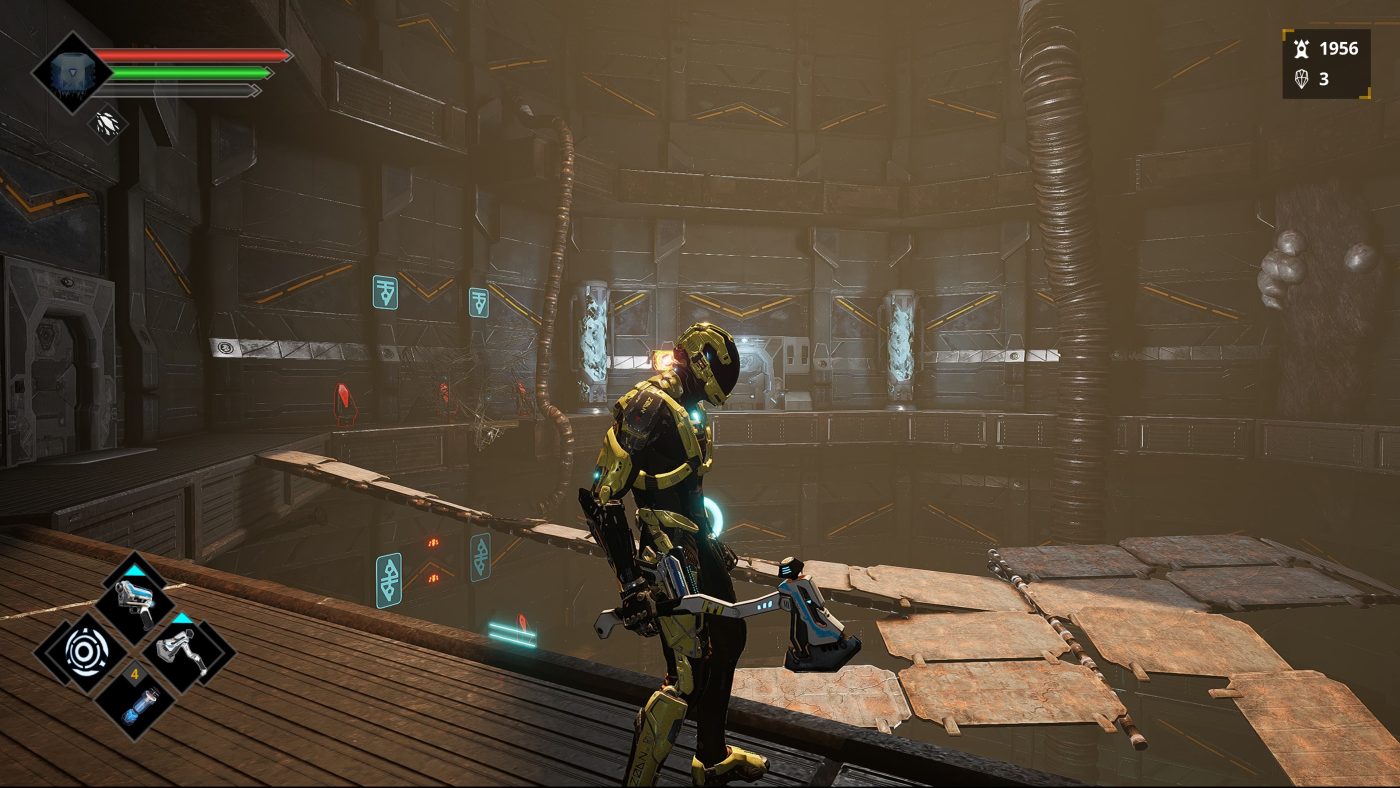
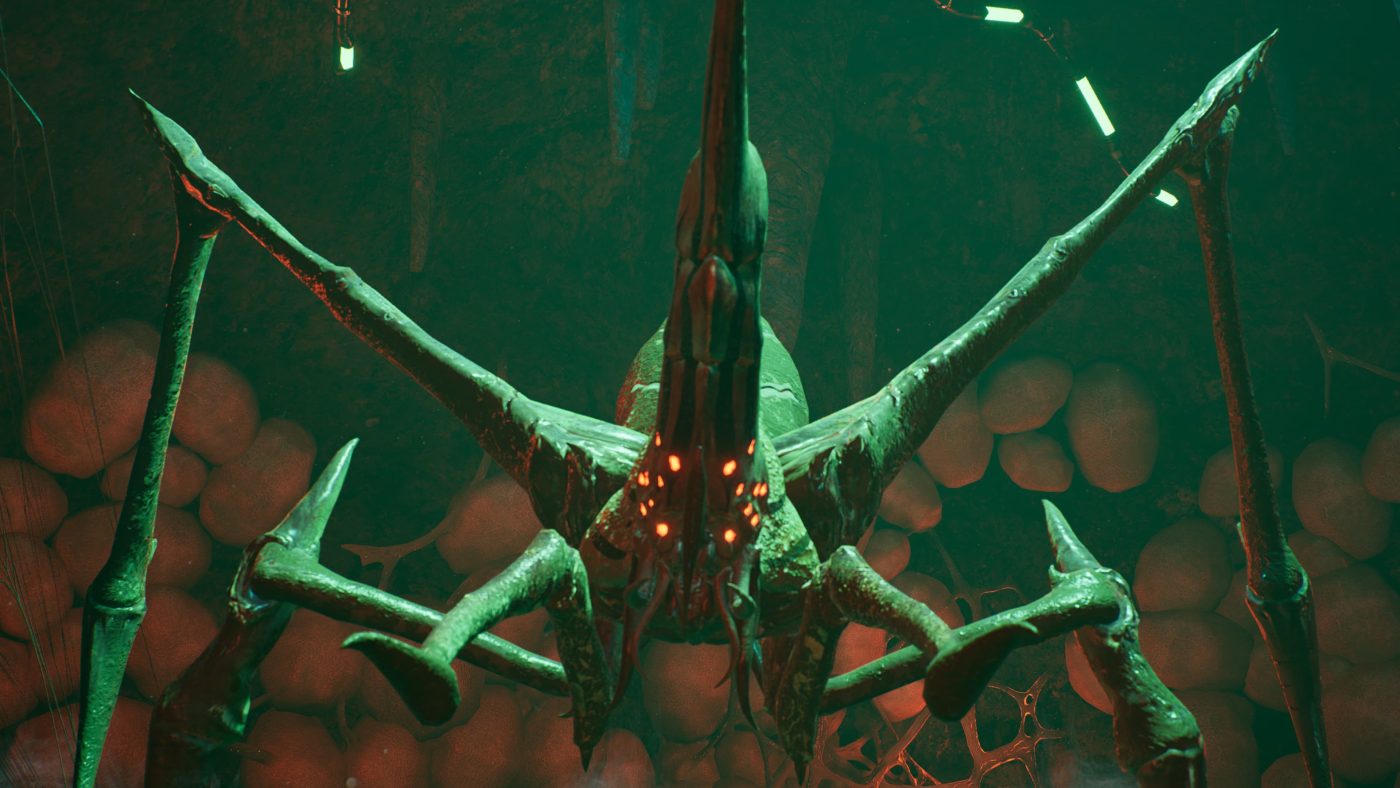
A World Built Around the Player
At its core, Dolmen thrives on the seamless interplay between world-building and gameplay – two elements that work together to shape not only the sense of adventure but also the player’s perception of Revion Prime and the dangers that lurk within.
Revion Prime is far more than a backdrop; it is a living world that tells its story through visual and environmental cues. Each area bears the mark of the Dolmen crystals’ corruption, warping nature into something almost unrecognizable. Unnaturally glowing rocks, twisted vegetation, decaying industrial structures, and caverns that pulse with alien life all contribute to a tense, oppressive atmosphere.
The world-building centers on the clash between human technology – industrial complexes and scientific outposts – and the alien, organic forces that dominate and corrupt. This contrast mirrors the narrative itself: humanity attempts to colonize, yet the alien environment reacts, reshaping everything in its path. The absence of friendly faces and the scarcity of human contact heighten the sense of isolation, turning Revion Prime into a character in its own right. The planet’s secrets are never fully revealed; instead, players reconstruct the story through scattered logs, lore fragments, and environmental storytelling. This deliberately fragmented approach encourages personal interpretation and reinforces the idea that, in such a vast and indifferent universe, knowledge is never complete.
Dolmen’s gameplay follows the familiar framework of soulslike games but introduces distinctive mechanics that enrich the experience. Progression is driven by challenging combat, careful resource management, and strategic skill allocation. The game’s standout feature – the Dolmen crystals – allows players to manipulate energy and wield elemental attacks. This system lets players adapt their approach, choosing between melee or ranged combat and deciding whether to focus on physical or energy-based enhancements.
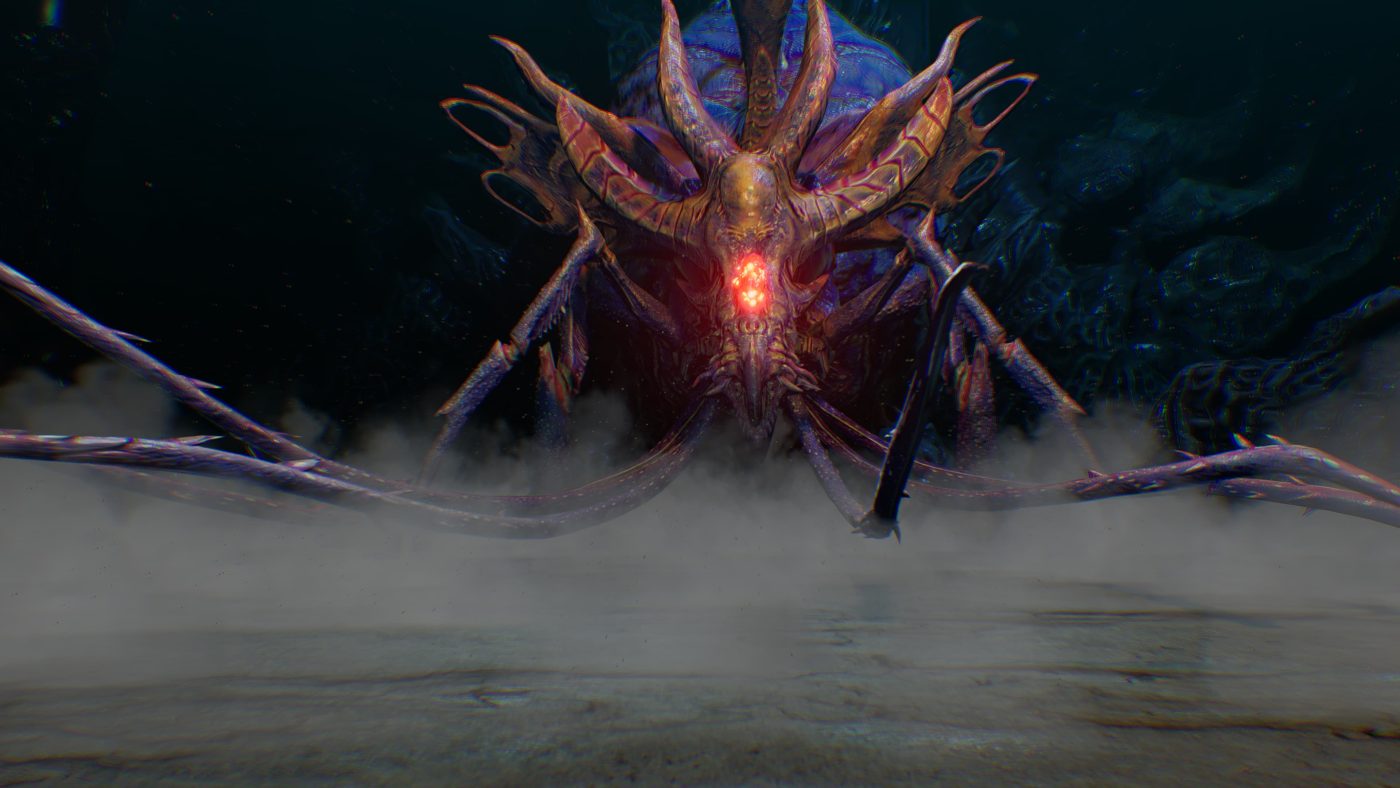
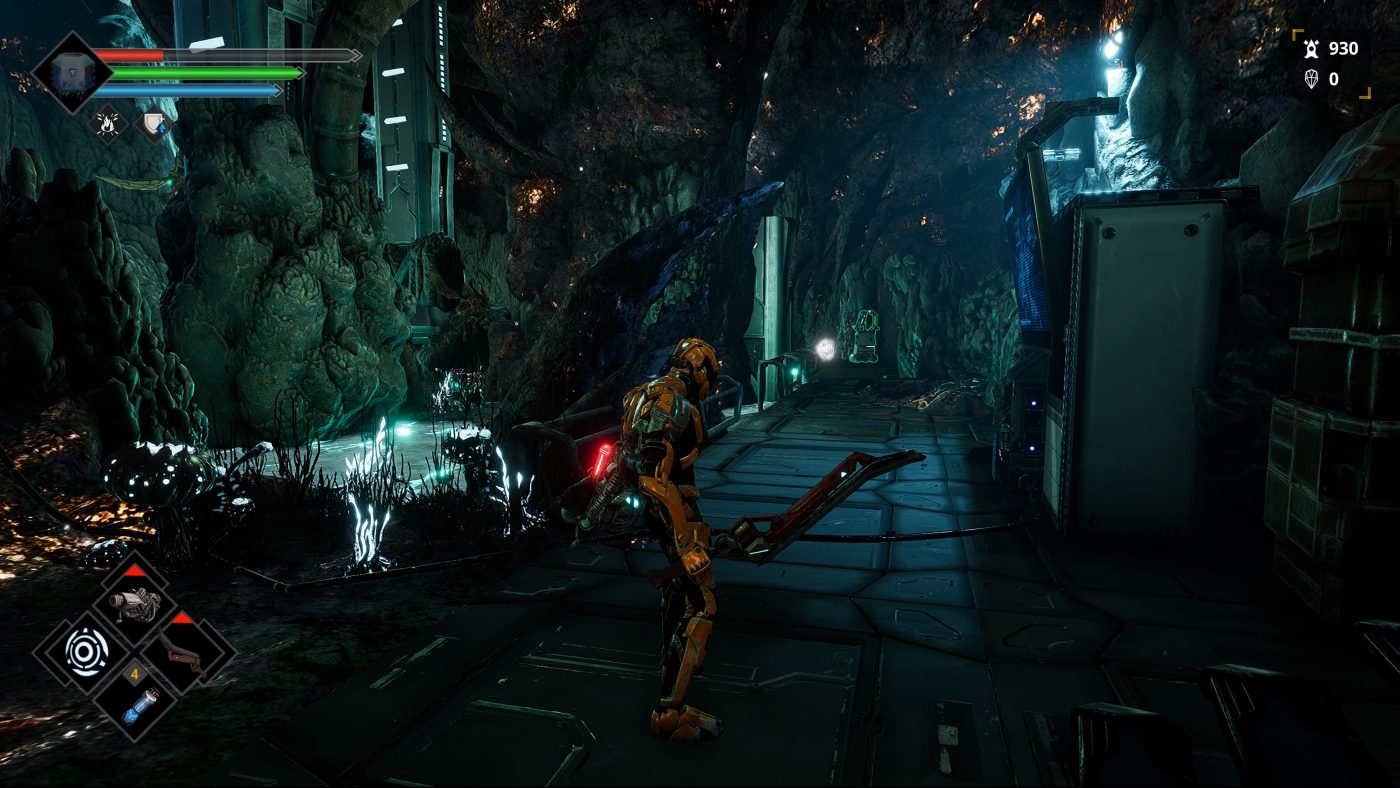
The combat system in Dolmen is dynamic and precise, demanding mastery of dodges, parries, and timing for survival. Unlike many games in the genre, firearms play a central role – they are not mere secondary tools but integral elements of the player’s arsenal. This encourages a hybrid playstyle, requiring a careful balance between aggressive close-quarters combat and measured ranged attacks. Crafting is equally vital: defeating enemies provides resources to build and upgrade equipment. Weapons and armor are not just functional; they also embody Revion Prime’s corruption, blending technological and organic elements that mirror the planet’s twisted nature. The ability to customize one’s gear adds depth and encourages experimentation.
Resource management adds another strategic layer. Beyond health and stamina, players must track the energy required for ranged attacks and special abilities. This demands careful planning, ensuring players are never caught unprepared during critical moments.
Level design, while occasionally linear, is thoughtfully structured around risk and reward: narrow corridors that can trap the unwary, larger areas hiding lethal foes, and shortcuts that aid future attempts. Progress is earned through effort, and each step forward strengthens the sense of personal achievement.
Boss encounters represent the pinnacle of Dolmen’s gameplay: brutal battles that test pattern recognition, reflexes, and resource management. These encounters are more than obstacles; they are narrative events in their own right, moments when Revion Prime reveals its most savage and perilous nature.
Ultimately, world-building and gameplay in Dolmen are inseparable. The planet conveys its story through corrupted environments and haunting silences, while gameplay translates that narrative into tangible, lived experience. Every encounter, every cautious step, becomes part of a relentless journey of survival. Even with technical or structural limitations, this seamless integration delivers a memorable, immersive experience, immersing players in a hostile universe that constantly drives them forward.
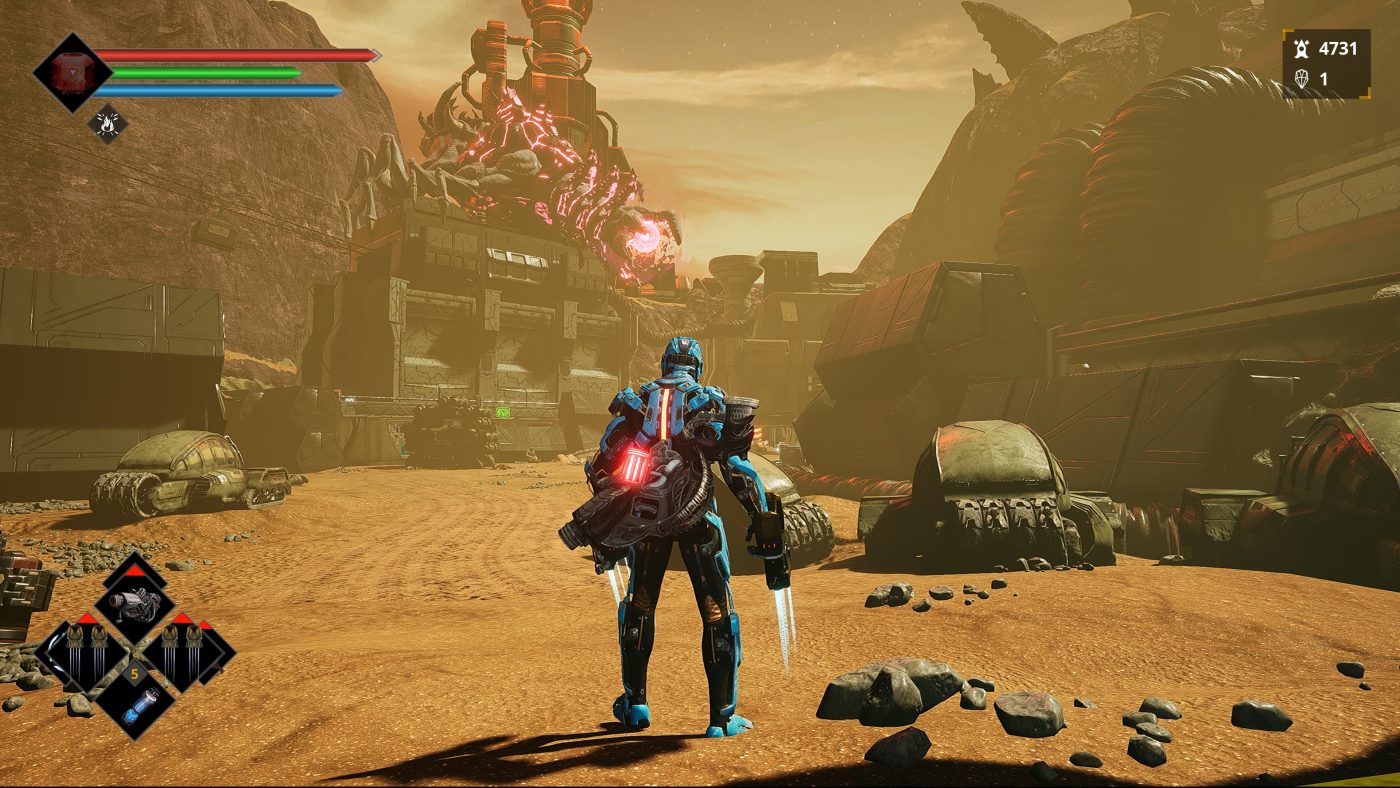
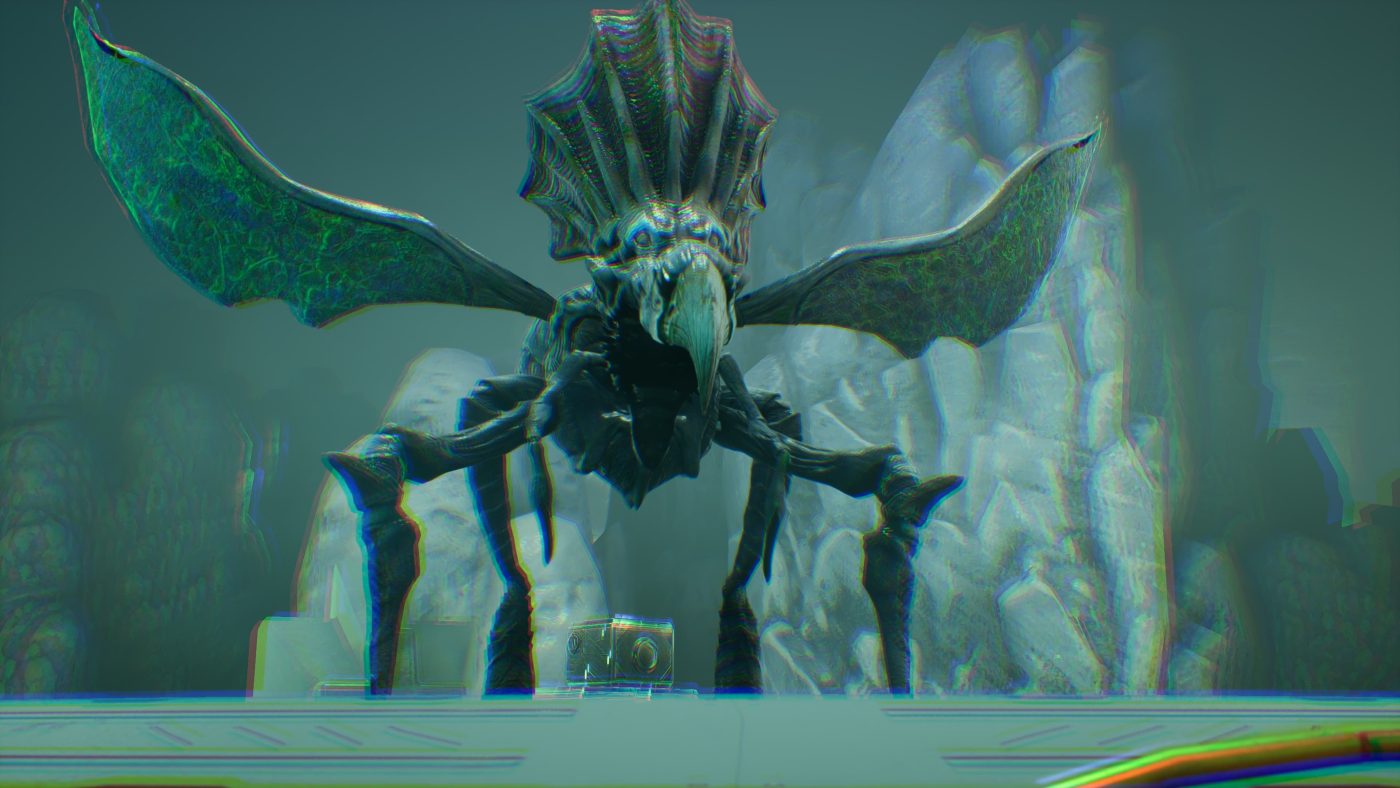
Mixed Reviews
When evaluating Dolmen critically, it is important to balance a clear-eyed recognition of its limitations with an appreciation of the creative ambition driving the project. Massive Work Studio’s effort is far from flawless, yet it is equally far from being a derivative soulslike clone. It establishes a distinct identity, defined as much by its artistic direction as by its gameplay innovations.
One of its most striking qualities is the boldness of its art direction. Revion Prime is not merely a backdrop but a world that imprints itself on the player’s memory. The vivid use of color, the grotesque and unsettling creature designs, and the unrelenting atmosphere of oppression work together to evoke a constant sense of unease. In a market where futuristic settings often blur into one another, Dolmen succeeds in carving out an aesthetic that feels unique and immediately recognizable.
On the gameplay side, Dolmen puts forward several fresh ideas. Its energy mechanic and the emphasis on ranged combat add welcome depth to the traditional soulslike formula, while the crafting system reinforces a sense of personalized progression. Boss encounters – though not always finely tuned – manage to deliver both tension and reward, serving as memorable highlights of the campaign.
Sound design further elevates the experience. Environmental audio and the eerie vocalizations of alien creatures heighten immersion, often achieving more impact than visuals alone could provide. This demonstrates how the developers, despite limited resources, made thoughtful choices in focusing on areas that amplify atmosphere and tension.
Where Dolmen falters most is in its technical execution. Despite being developed in Unreal Engine, the game falls short of higher graphical standards: textures often lack definition, animations can feel stiff, and environments risk repetition, diminishing the overall visual impact. Performance issues – ranging from frame rate drops to minor bugs – further interrupt the flow. While not game-breaking, these shortcomings are especially evident in a genre that demands absolute precision.
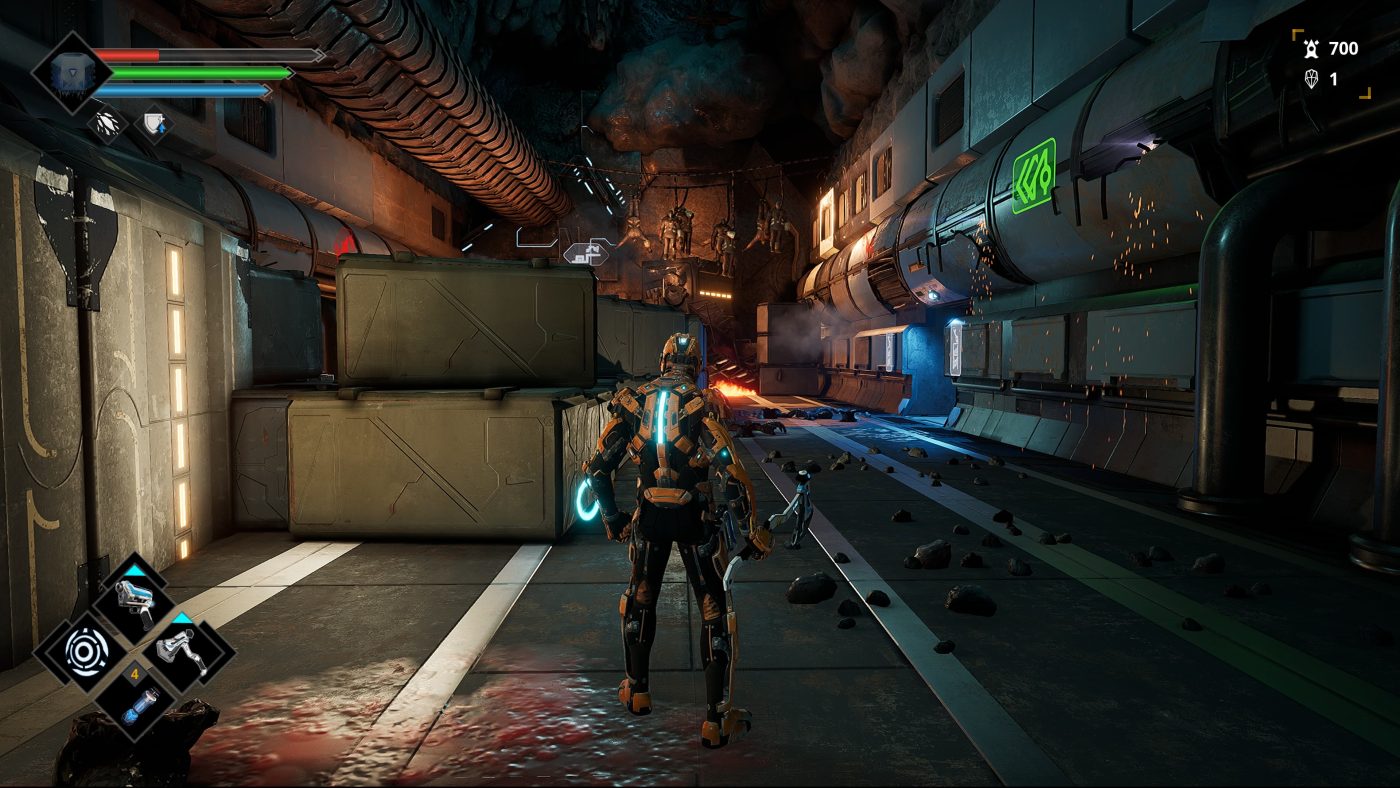
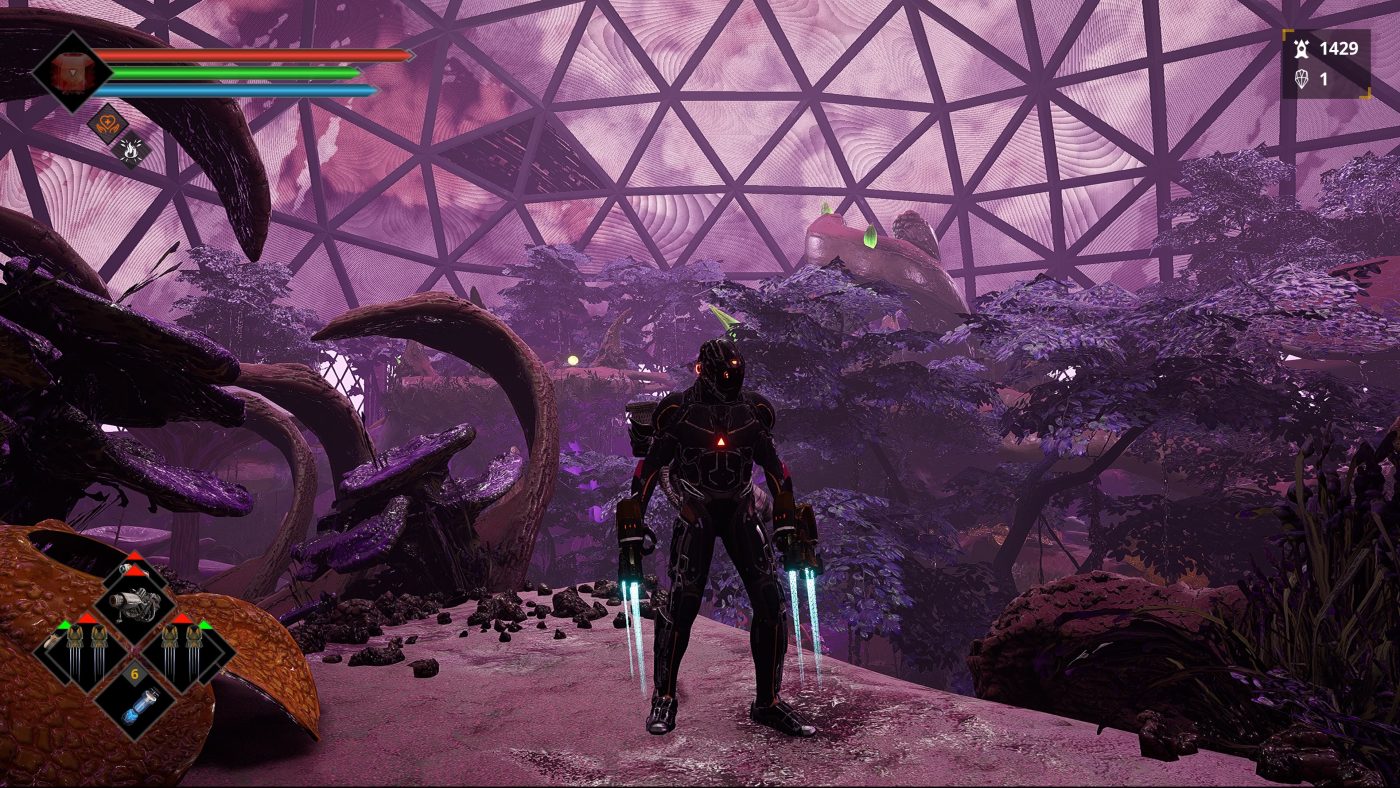
Another shortcoming lies in the narrative. The fragmented storytelling approach, typical of the soulslike genre, feels less effective here: there are no truly memorable moments or characters to serve as emotional anchors. The lore is intriguing but often too opaque, leaving some players unsatisfied. In short, Dolmen sparks curiosity, but it does not always provide a proportionate narrative payoff – an issue reflected in its somewhat underwhelming ending.
On the gameplay side, despite original ideas, issues of balance and pacing emerge. Certain encounters feel unfairly punishing, less because of deliberate challenge and more due to technical imprecision, while other sections drag with repetitive enemies that dilute the tension. At times, the level design is overly linear, reducing the thrill of exploration and causing areas to blur together.
It must also be acknowledged that Dolmen is not a game for everyone. Its punishing nature, compounded by technical flaws, risks alienating players who are not already committed fans of the soulslike genre. The absence of accessibility options or flexible difficulty settings further narrows its appeal, making the experience daunting and exclusionary for some.
Ultimately, Dolmen occupies an ambivalent space. It neither competes with – nor aspires to compete with – the titans of the genre, yet it refuses to settle for imitation. It is an ambitious project that bears the weight of its limited resources but nonetheless asserts a strong identity. Its strength lies in its alien atmosphere, inventive gameplay elements, and its ability to sustain an unrelenting sense of unease and tension.
From a critical standpoint, Dolmen is best recommended to players seeking something distinctive, willing to look past technical shortcomings in favor of an original aesthetic and a personal spin on the soulslike formula. It is not flawless, but it is sincere in its vision: a journey through an unforgiving alien world that never relents, leaving players to confront its horrors head-on.
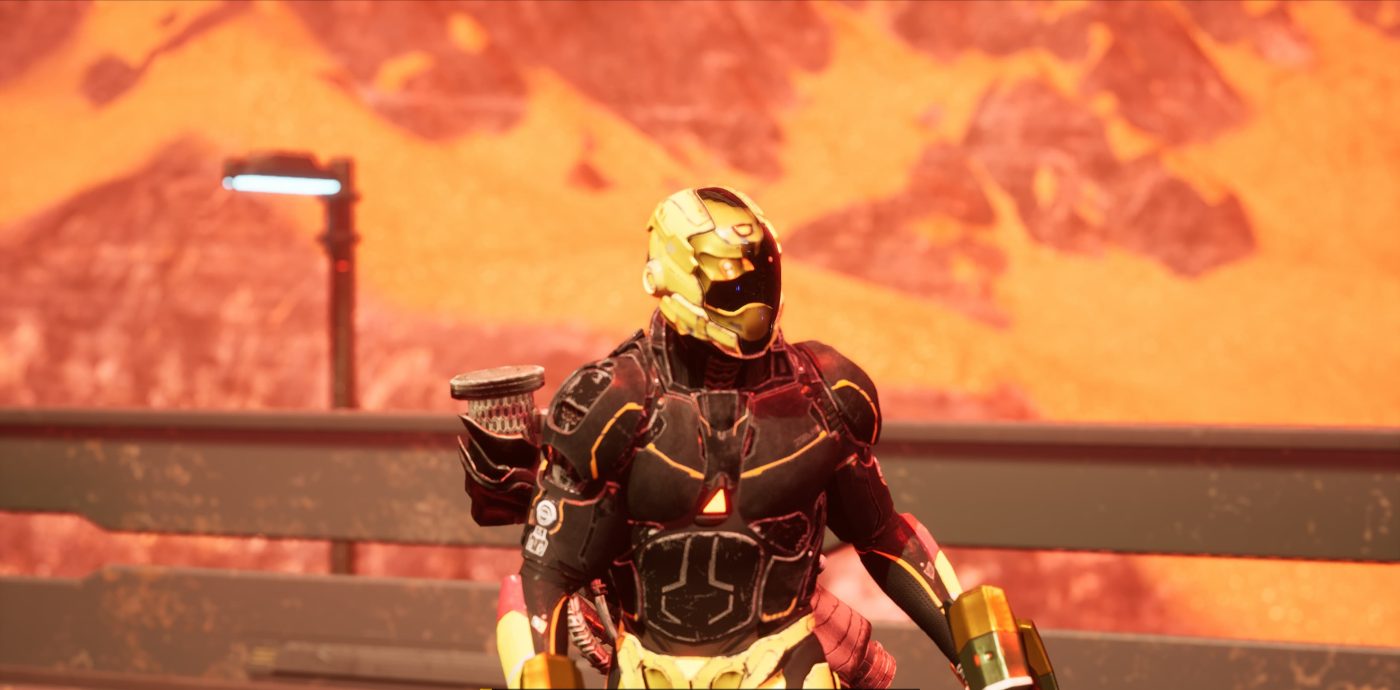
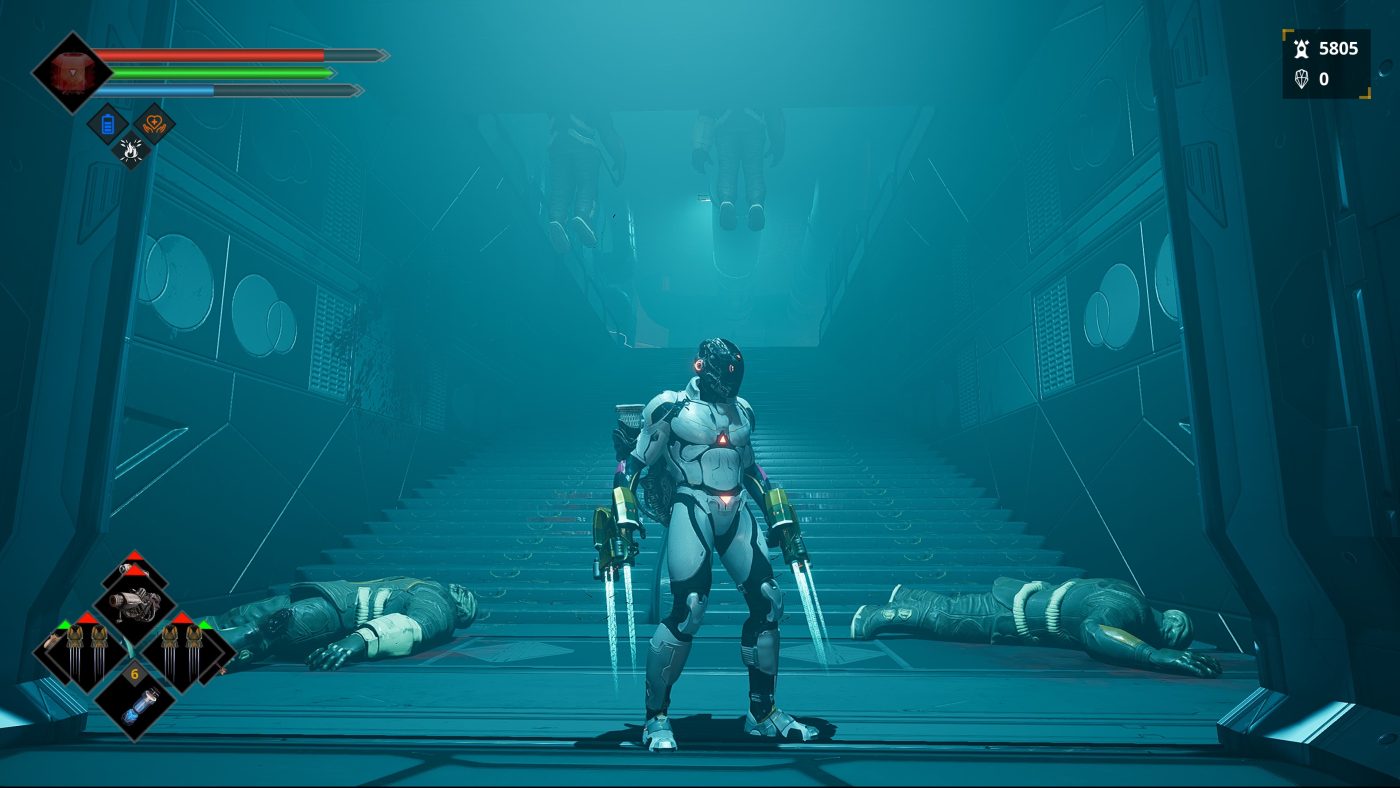
Dolmen
PRO
- Distinctive and oppressive atmosphere: Revion Prime immerses players in a world of alienation and unease, with coherent and evocative world-building.
- Bold artistic vision: Striking use of color, disturbing creature designs, and a visual style that leaves a lasting impression.
- Innovative mechanics: Ranged weapons are fully integrated into core combat, complemented by energy management and a meaningful crafting system.
- Memorable boss encounters: Challenging fights that blend visual spectacle with tactical depth.
- Immersive sound design: Environmental effects, alien creature sounds, and a minimalist yet effective soundtrack heighten tension.
- Strong identity: Despite technical limitations, the game stands out for its ambition, personality, and creative courage.
CON
- Technical shortcomings: Low-detail textures, stiff animations, frame rate drops, and minor bugs can occasionally disrupt gameplay flow.
- Occasionally linear and repetitive level design: Some areas lack variety and a sense of discovery.
- Cryptic narrative: Lore is intriguing but often vague, with few truly memorable story moments.
- Inconsistent balancing: Certain encounters feel unfair, often due to technical imprecision rather than genuine difficulty.
- Soundtrack lacks standout tracks: Effective at setting mood, but rarely memorable outside the game itself.

